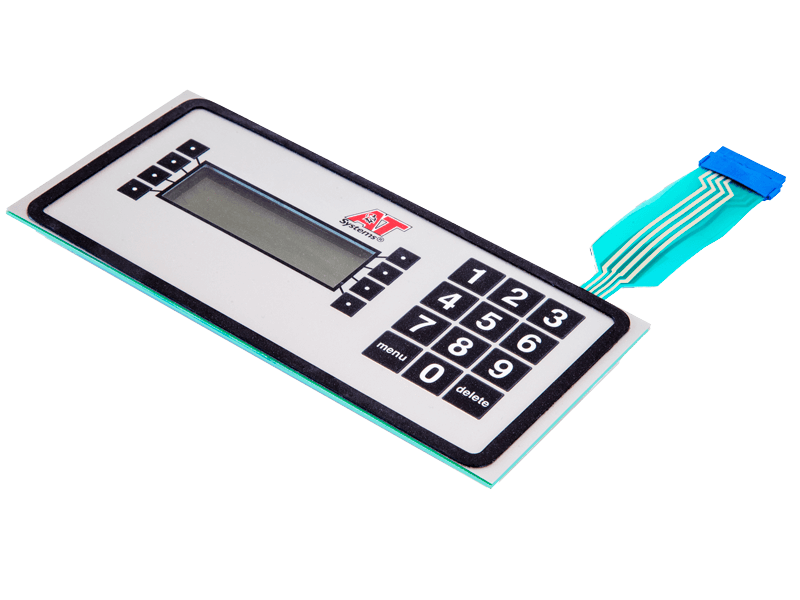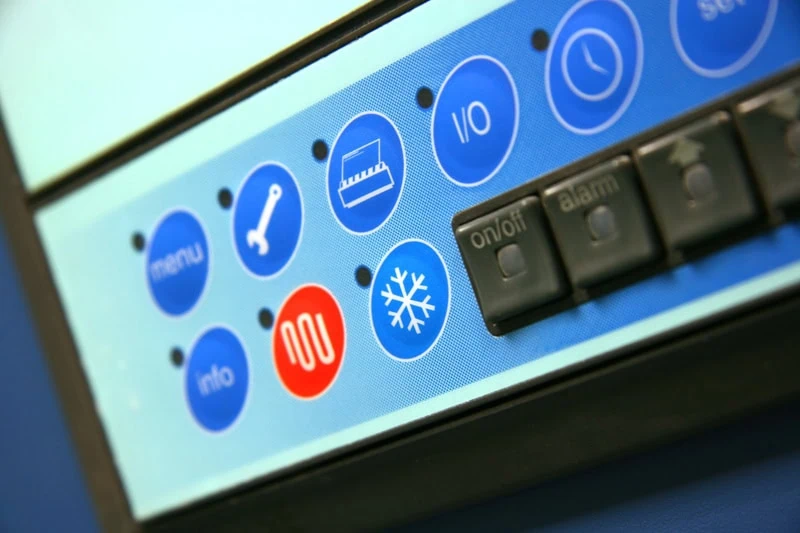The Ultimate Source on Membrane Layer Changes: Style, Functionality, and Applications
Membrane switches over offer as a fascinating junction of layout and functionality, playing an essential role in contemporary individual interfaces throughout different fields. As we check out the diverse applications of membrane buttons, it ends up being noticeable that their adaptability and toughness are crucial in settings ranging from health care to customer electronic devices.

Comprehending Membrane Layer Switches
Membrane layer switches are a kind of interface technology commonly utilized in numerous digital gadgets, defined by their thin, versatile design and functionality. These switches contain numerous layers that consist of graphic overlays, adhesive layers, and circuitry, allowing a effective and small interface for individuals. They can be found in appliances, medical devices, and commercial control board, providing a dependable method for individual interaction.
One of the primary benefits of membrane layer switches is their ability to stand up to contaminants such as dirt and dampness, making them ideal for atmospheres where toughness is necessary. Their inconspicuous layout enables for smooth combination right into various applications, while the customizable graphic overlays improve customer experience by offering clear visual feedback. In addition, membrane switches can suit a range of innovations, such as responsive feedback and backlighting, additional boosting their functionality.
The production procedure for membrane switches over commonly entails display lamination, printing, and die-cutting methods, ensuring precision and consistency in manufacturing. In general, membrane changes stand for a functional and effective solution for contemporary electronic gadgets, combining performance with aesthetic appeal in customer interface layout.
Secret Parts and Layout Components
A range of essential components and layout components collaborated to develop an efficient membrane switch. At the core, the graphic overlay serves both practical and visual objectives, using an user-friendly user interface while shielding inner elements from ecological elements. The choice of materials, generally polyester or polycarbonate, affects resilience and responsive comments.
Under the overlay, the adhesive layer ensures the switch adheres safely to the substratum, which can be glass, plastic, or steel. The spacer layer is crucial, as it maintains the needed gap in between the overlay and the circuit layers, permitting for efficient actuation. Membrane Switches. Circuit traces, usually made from conductive ink or adhesive, are printed on an adaptable substratum, making it possible for electrical signals to be transferred when pressure is used
Style factors to consider likewise include the arrangement of tactile domes or embossing that offer physical responses to the individual, enhancing the general experience. In addition, the design and spacing of the switches should be enhanced for simplicity of use, making certain that users can browse the interface with ease. Generally, these parts and style elements work synergistically to develop a trustworthy, functional membrane layer switch customized to certain applications.
Performance and Operation Mechanism
At the heart of effective performance for membrane switches exists their operational device, which facilitates individual communication through a simple yet effective design. These buttons run on the concept of pressure activation, where a user applies force to an assigned area of the button (Membrane Switches). This action compresses the layers of the switch, completing an electrical circuit that sends out a signal to the linked gadget
The building usually consists of a leading visuals layer, a sticky spacer layer, and a bottom circuit layer, which collectively create a robust user interface. When pressure is applied, the leading layer collapses against the lower circuit layer, allowing conductive traces to connect. This style not just makes it possible for clear tactile feedback yet likewise guarantees durability and integrity, as the helpful site switches are commonly resistant to dust and dampness.
In addition, the flexibility of membrane layer switches allows for combination with various modern technologies, including LED indicators and microcontrollers, boosting their performance. By giving a streamlined interface that lessens mechanical wear, membrane layer switches over remain a popular option in applications varying from customer electronics to industrial equipment, ensuring optimal efficiency and individual satisfaction throughout varied settings.
Sorts Of Membrane Switches

Another significant category is brightened membrane layer buttons, which incorporate backlighting to improve presence in low-light problems. These switches are typically utilized in control panels and dashboards where clear exposure is vital.
In addition, there are custom membrane layer changes made to satisfy details dimensional, graphical, and practical demands. These customizations can consist of unique shapes, shades, and designs, permitting smooth assimilation right into different gadgets.

Applications Throughout Different Industries
Exactly how do membrane buttons boost performance throughout varied industries? These functional parts are important to many applications, providing streamlined user interfaces and durable performance. In the clinical industry, membrane buttons play a vital function in devices such as diagnostic equipment and client tracking systems, where integrity and convenience of special info cleansing are vital. Their capacity to endure rough settings makes them suitable for research laboratory instruments and medical tools.
In the vehicle industry, membrane layer switches are frequently made use of in dashboards and control board, supplying intuitive controls that boost motorist safety and security and comfort. The customer electronic devices industry also gains from their lightweight and personalized features, enabling smooth layouts for smart devices and home devices.
In addition, membrane layer switches find applications in commercial automation, where they contribute to reliable machinery procedure and surveillance systems. Their resistance to dirt and wetness guarantees performance in requiring conditions (Membrane Switches). Additionally, the food and beverage industry uses membrane switches for devices control, where health and longevity are essential
Conclusion
In final thought, membrane layer changes represent a vital development in user interface technology, characterized by their distinct layout and functionality. The convenience of membrane layer switches over promotes their application across varied industries, from clinical tools to customer electronic devices.
Membrane switches over offer as a fascinating junction Get More Info of design and performance, playing a crucial function in modern individual interfaces throughout different sectors.Membrane buttons are a kind of individual interface technology commonly made use of in numerous electronic tools, characterized by their slim, versatile design and performance.At the heart of reliable capability for membrane switches exists their operational mechanism, which promotes user communication with a basic yet efficient style. These buttons operate on the principle of stress activation, where a user applies force to a marked area of the switch.In verdict, membrane switches represent an important technology in user interface modern technology, defined by their distinct layout and capability.